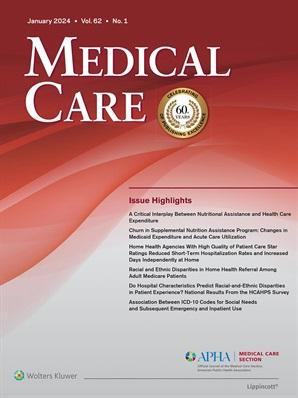Headline
An association between Z code assignment and increased emergency and inpatient health care utilization presents opportunities for targeted interventions that address patients' social needs.
Context
The International Classification of Diseases tenth revision (ICD-10) introduced social needs-related Z codes that can be used by clinicians to document social risk factors — such as unemployment, housing needs, or economic circumstances — identified during a health care encounter. In this retrospective cohort study, the authors use administrative health plan data, from commercial and Medicare Advantage health plans, between January 2016 and December 2020, to explore the relationship between Z code assignment with subsequent emergency department (ED) visits and inpatient admissions, as well as whether individual categories of social need are associated with differences in ED and inpatient use.
Findings
Study findings indicate that patients with any assigned Z codes tend to be older, female, and have a higher burden of clinical comorbidities. The study revealed a significant association between Z code assignment and increased rates of both ED visits and inpatient admissions. Notably, Z codes for social risk factors were associated with a higher rate of ED visits for patients with Medicare Advantage plans and higher rates of inpatient admissions among patients with both commercial and Medicare Advantage plans.
Takeaways
Given that Z code assignment is associated with higher subsequent ED and inpatient utilization, there is potential to use these codes to identify patients experiencing social needs and connect them with the proper resources to potentially reduce avoidable utilization. The authors suggest that there are opportunities to further target intervention through Z code assignment — for example, patients assigned the Z code for homelessness may be candidates for supportive housing interventions, which have been shown to reduce ED and inpatient use.



